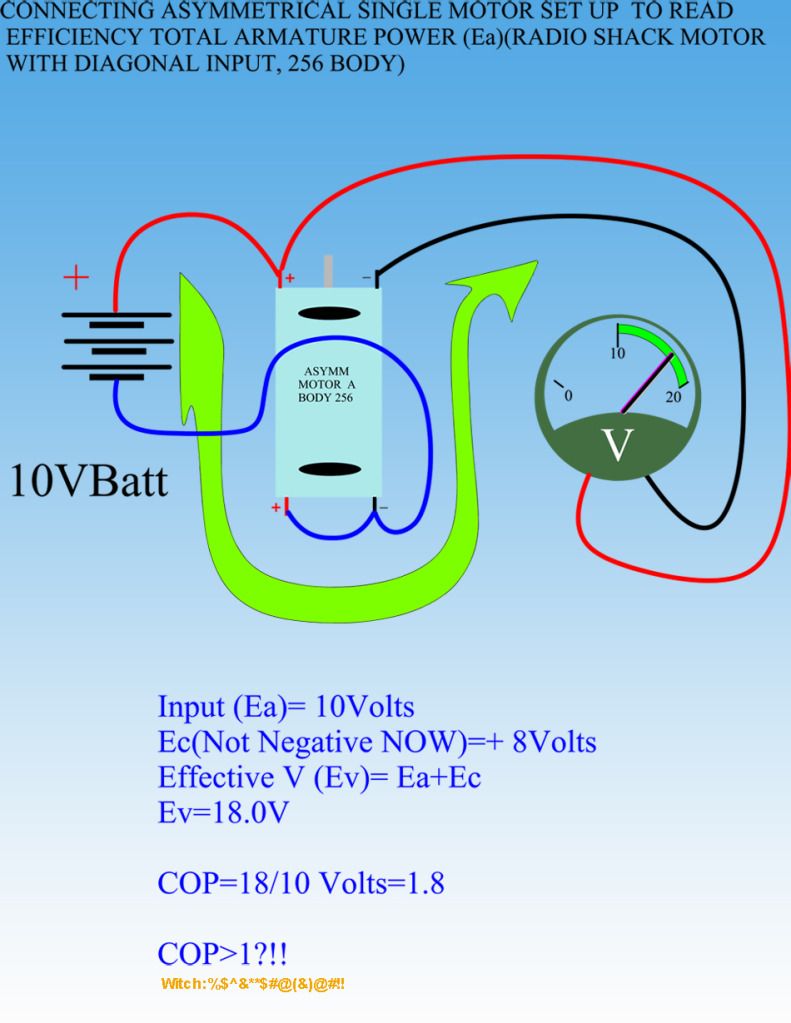Hello Dear Bob
Hello Bob,
What does it do?...it "Humms"...or just absolutely noting happens?
It does a huge difference in this answer being Y/N
Check the motor for rotation freedom...is it moving?...beside magnetic pulse feeling...it does move?
If it would be touching a magnet it will make a noise...a different sound...
Possible faults
1- Commutators not aligned in a linear fashion and/or at the ANGLES related to Armatures POLES, as indicated in Drawing...
See Bob...the Commutator spaces and the contact elements create a pattern, either one (gap or metal contact) should line up either with very center of Pole or Gap between Poles...and that relates to BOTH COMM.
Make sure you do not have an inverted winding...it will humm but won't move...
Don't move to 5 yet...it is more complex...let's fix this one...
Regards
Ufopolitics
Originally posted by Bob Smith
View Post
Hello Bob,
What does it do?...it "Humms"...or just absolutely noting happens?
It does a huge difference in this answer being Y/N
Check the motor for rotation freedom...is it moving?...beside magnetic pulse feeling...it does move?
If it would be touching a magnet it will make a noise...a different sound...
Possible faults
1- Commutators not aligned in a linear fashion and/or at the ANGLES related to Armatures POLES, as indicated in Drawing...
See Bob...the Commutator spaces and the contact elements create a pattern, either one (gap or metal contact) should line up either with very center of Pole or Gap between Poles...and that relates to BOTH COMM.
Make sure you do not have an inverted winding...it will humm but won't move...
Don't move to 5 yet...it is more complex...let's fix this one...

Regards
Ufopolitics

 [/IMG]
[/IMG]

 In the video when you put the pliers against the motor , I noticed the drop in readings,If you are capturing the back emf , shouldn't you get a bigger back emf kick , because your drawing more power through the coil???
In the video when you put the pliers against the motor , I noticed the drop in readings,If you are capturing the back emf , shouldn't you get a bigger back emf kick , because your drawing more power through the coil??? HERE FRIEND!!
HERE FRIEND!!
Comment